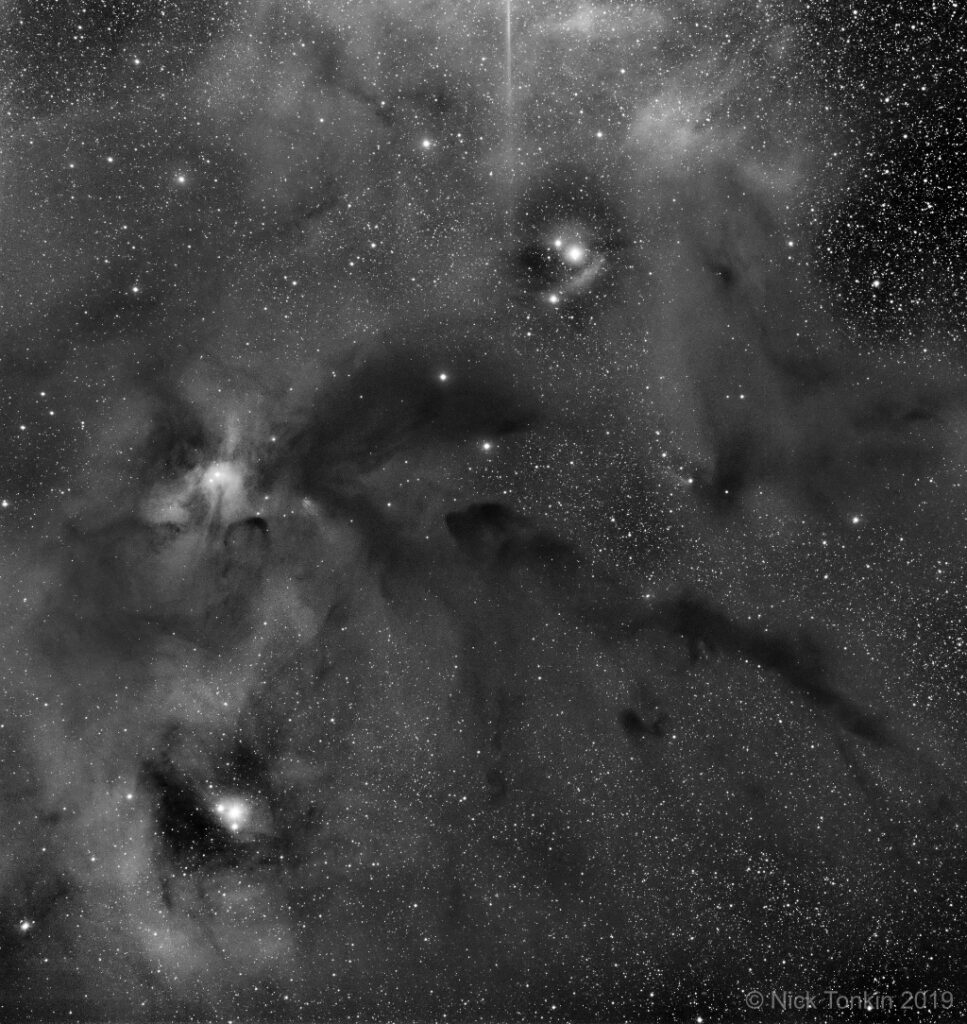This is one of those retrospective posts of an image I took way back in 2019.
IC4604

Session Data
- Date: 15/04/20219
- Time: 17:09 – 17:52 UT
- Seeing: Unknown
- Transparency: Mostly Clear,
- Temp: Unknown
- Air Pressure: Unknown
- Humidity: Unknown
- Dew Point: Unknown
- Wind Speed: Unknown
Scope: Televue P127 APO f/5.3 Camera: FLI Proline PL1608 Filter: Astrodon Ha Calibration: Dark and Flat subtracted.
A remote imaging session using T9 in Siding Springs Australia. I know this nebula looks really nice in colour, but seeing it in mono Ha is a little more unusual.
This image consists of a mix of 2 x 300 second subs and 10 x 180 second subs. Processes in Pixinsight, although I don’t seem to have recorded a processing history, so cannot tell you what steps I took.
R Ophiuchi ( lower left quadrant of the image with the two smaller stars to the 6 and 9 O’Clock position) Typical of first confirmed variables in a constellation, R Oph is a Mira star with a bright maximum (in this case 7.6) and a much fainter minimum (13.3). Such stars were easy to discover because of their alternating periods of visibility and invisibility. In this case, R Oph has help in that it is extremely easy to find, lying about three-quarters of a degree southwest of the 2.6 magnitude star Eta Ophiuchus. During an ‘average” cycle, this star drops more than six magnitudes and then climbs back up in a period of 306.5 days.